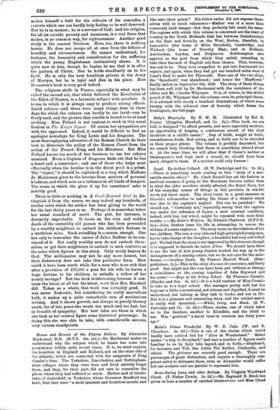Homes and Haunts of the Pilgrim Fathcrs. By Alexander Mackennal,
D.D. (R.T.S. 30s. net.)—Dr. Mackennal makes us understand why the subject which he treats has come into prominence within quite recent times. It is, we must explain, the localities in England and Holland, not on the other side of the Atlantic, which are connected with the emigrants of King Charles's time. The Yorkshire, Lincolnshire, and Nottingham. shire villages where they were born and lived entirely forgot them, and they, for their part, did not care to remember the places where they had suffered so much. Mather said of inhabi- tants of Austerfield, in Yorkshire, where Governor Bradford was born, that they were "a most ignorant and licentious people, and like unto their priest." His fellow-exiles did not express them. selves with so much vehemence—Mather was of a more than commonly hard temper—but they probably felt much the same. The regions with which this volume is concerned are the tract of country in the North Midlands that lies between Gainsborough on the East and Scrooby on the West, Boston, Standish, in Lancashire (the home of Miles Standish), Cambridge, and Wisbech (the home of Dorothy May), and in Holland, Amsterdam, Leyden, and Delphaven. Southampton also appears as the port from which they sailed, intending to take their farewell of English soil from thence. This, however, was not to be. They were compelled to put into Dartmouth for repairs, and again, when they had got one hundred miles west of Land's End, to make for Plymouth. Here one of the two ships, the ' Speedwell,' was abandoned ; and hence the ' Mayflower ' finally sailed on September 6th, 1620. The story of these things has been well told by Dr. Mackennal with the assistance of the editor and Mr. Charles Whymper. It is, of course, to the skilful pencil of Mr. Whymper that the volume owes its principal charm. It is adorned with nearly a hundred illustrations, of which some twenty, with the coloured view of Scrooby which forms the frontispiece, are full-page.






















































 Previous page
Previous page